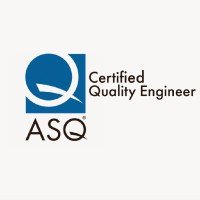AWS Certified DevOps Engineer Professional Practice Exam
- Description
- Curriculum
- Reviews

Description
AWS Certified DevOps Engineer Professional Practice Exam
Format – Practice Exam
No. of Questions – 543 Questions
MCQ and Answers with Explanations
AWS Certified DevOps Engineer – Professional Certification
About AWS Certified DevOps Engineer – Professional Certification Exam
AWS Certified DevOps Engineer has been built to validates the technical expertise of the candidate in provisioning, operating, and managing distributed application systems on the AWS platform. It validates an examinee’s ability to –
- Implement and manage continuous delivery systems and methodologies on AWS
- Implement and automate security controls, governance processes, and compliance validation
- Define and deploy monitoring, metrics, and logging systems on AWSImplement systems that are highly available, scalable, and self-healing on the AWS platform
- Design, manage, and maintain tools to automate operational processes
Recommended Knowledge for AWS Certified DevOps Engineer – Professional Exam
- Two or more years’ experience provisioning, operating, and managing AWS environments
- Experience developing code in at least one high-level programming language
- Experience building highly automated infrastructures
- Experience administering operating systems
- Understanding of modern development and operations processes and methodologies.
Course Outline on AWS Certified Advanced Networking Specialty [ANS-C00] Certification
Domain 1: SDLC Automation (22%)
1.1 Apply concepts required to automate a CI/CD pipeline
1.2 Determine source control strategies and how to implement them
1.3 Apply concepts required to automate and integrate testing
1.4 Apply concepts required to build and manage artifacts securely
1.5 Determine deployment/delivery strategies (e.g., A/B, Blue/green, Canary, Red/black) and how to implement them using AWS Services
Domain 2: Configuration Management and Infrastructure as Code (19%)
2.1 Determine deployment services based on deployment needs
2.2 Determine application and infrastructure deployment models based on business needs
2.3 Apply security concepts in the automation of resource provisioning
2.4 Determine how to implement lifecycle hooks on a deployment
2.5 Apply concepts required to manage systems using AWS configuration management tools and services
Domain 3: Monitoring and Logging (15%)
3.1 Determine how to set up the aggregation, storage, and analysis of logs and metrics
3.2 Apply concepts required to automate monitoring and event management of an environment
3.3 Apply concepts required to audit, log, and monitor operating systems, infrastructures, and applications
3.4 Determine how to implement tagging and other metadata strategies
Domain 4: Policies and Standards Automation (10%)
4.1 Apply concepts required to enforce standards for logging, metrics, monitoring, testing, and security
4.2 Determine how to optimize cost through automation
4.3 Apply concepts required to implement governance strategies
Domain 5: Incident and Event Response (18%)
5.1 Troubleshoot issues and determine how to restore operations
5.2 Determine how to automate event management and alerting
5.3 Apply concepts required to implement automated healing
5.4 Apply concepts required to set up event-driven automated actions
Domain 6: High Availability, Fault Tolerance, and Disaster Recovery (16%)
6.1 Determine appropriate use of multi-AZ versus multi-region architectures
6.2 Determine how to implement high availability, scalability, and fault tolerance
6.3 Determine the right services based on business needs (e.g., RTO/RPO, cost)
6.4 Determine how to design and automate disaster recovery strategies
6.5 Evaluate a deployment for points of failure.





